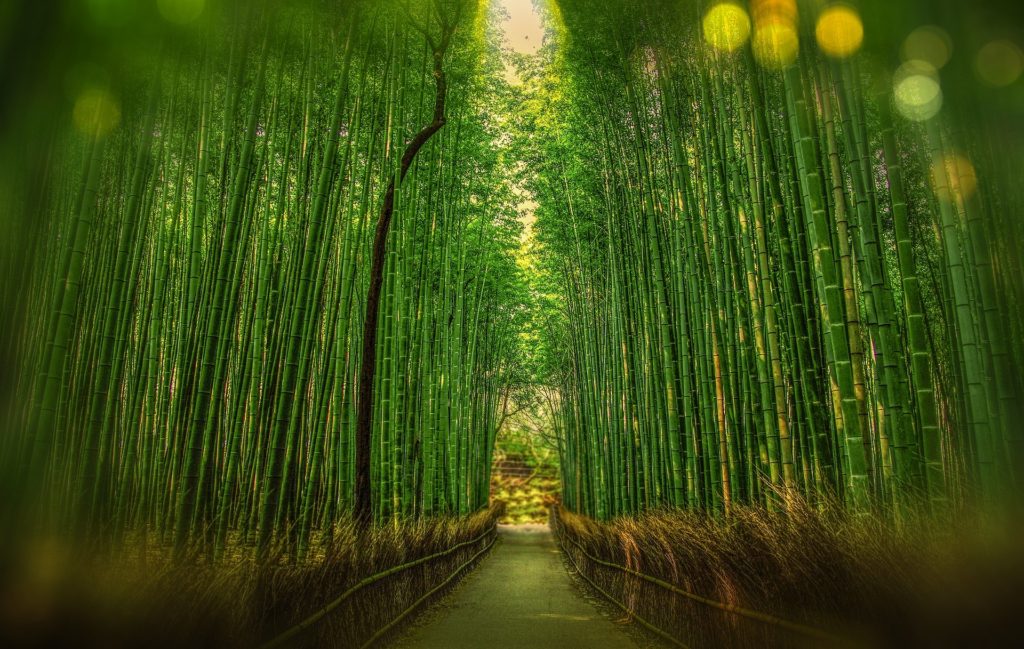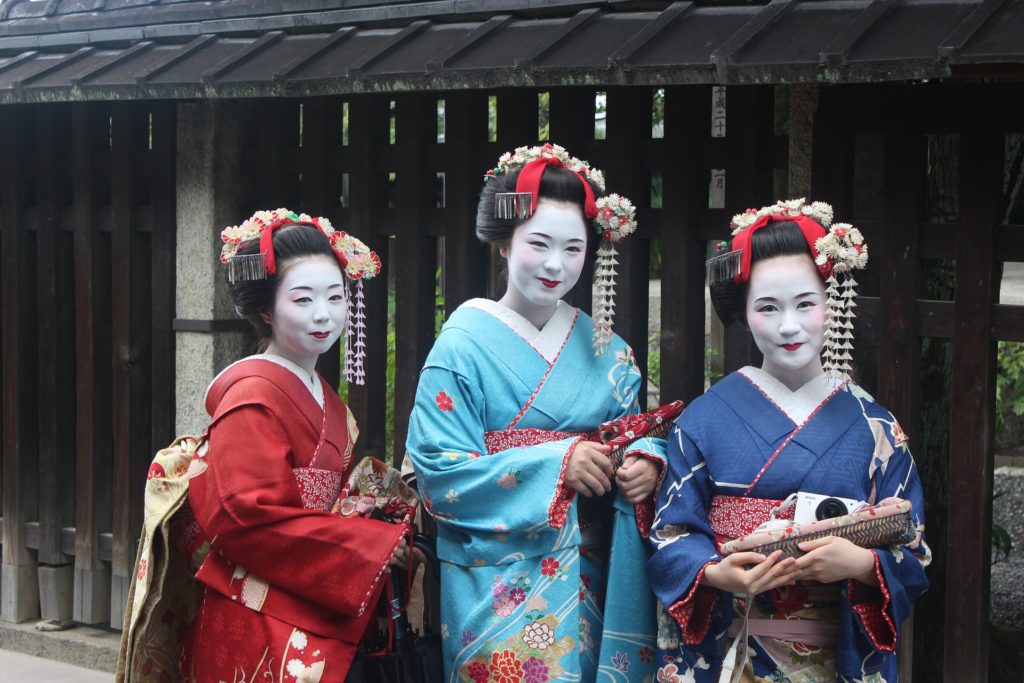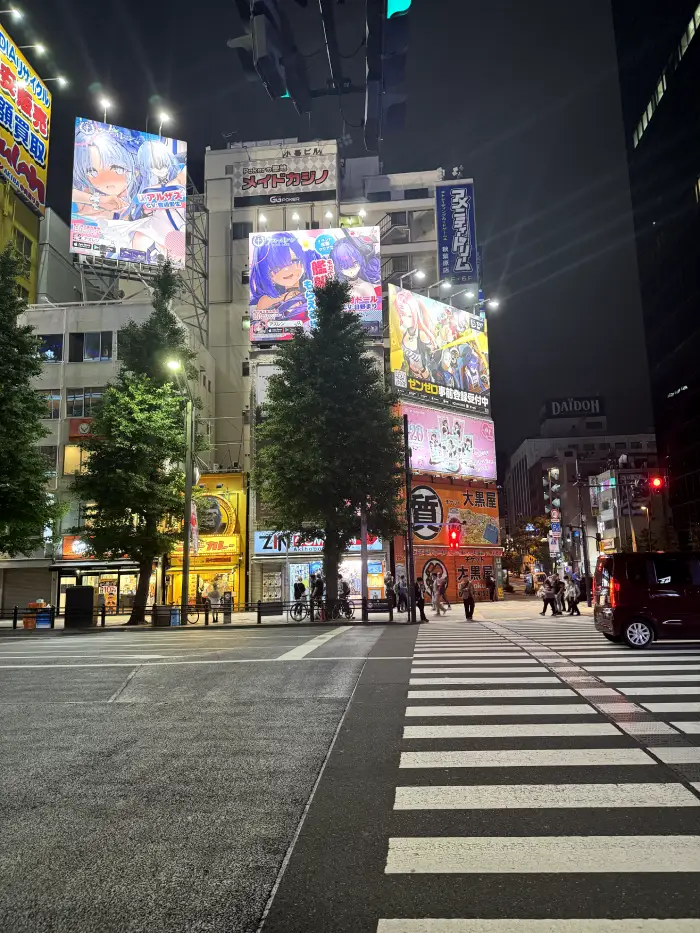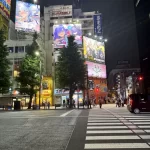Japan has now become synonymous with ground-breaking technology, modern gimmicks, and futuristic visuals. While the capital city of Japan and Osaka might seem to be more exciting, it is Kyoto wherein lies the true essence of Japan. You can find some of the best places to do the ultimate activities in Kyoto.
Far removed from the hustle and bustle, Kyoto is a slice of old Japan. The cultural and historical centre of Japan, Kyoto, was once the capital of the country, and today, it has retained its authenticity. Home to over a thousand temples, picturesque gardens, old architecture, and definitely the geishas, Kyoto is a city that immediately draws you in. Kyoto’s main attractions include temples, shrines, gardens, and other historical buildings, many of which are a part of UNESCO world heritage sites.
So, if you are planning to set sails for Japan on your female solo trip, Kyoto should definitely be on your list.
1. How to reach
A little over 2 hours from Tokyo by bullet train, Kyoto is surrounded by mountains on three sides and is only 40kms from Osaka. To know more about travelling in trains in Japan, here are some tips for you.
2. Learn a bit of history
Kyoto was the capital of Japan for over 1000 years, and so it developed into the country’s center for high culture, tradition, and politics. Though the beautiful city has been ravaged many times in the past due to wars and natural disasters, it was surprisingly untouched during World War II.
3. Where to stay
To enjoy Kyoto at its authentic best, spend the night at a ryokan. Complete with matted tatami floors, delicious full-course meal or Kyo-kaiseki, traditional kimono, and even a dip in an onsen, stay at a ryokan to immerse yourself in the experience. Though a little expensive than your hotels or hostels, it is okay to pay the price for authenticity. The best areas to stay in are downtown and the Higashiyama area of the city.
4. Best time to visit
Spring or autumn is the best time to experience the ultimate activities in Kyoto. During both of these times, the city looks vibrant in its colours. In spring, pink and white cherry blossoms bloom, while autumn brings in fiery reds, oranges, and bright yellow.
5. Take a stroll along the bamboo forest

When we set off for a solo trip, we seek calm and tranquility. The Sagano bamboo forests in Arashiyama is just the place for that. Try going there early morning to beat the rush and spend at least half a day just walking around the beautiful and scenic forest. The path is wide, and the tall green bamboo plants play hide-and-seek, and slanting sunbeams penetrate the densely populated bamboo trees. The forest is free and is open throughout the day. Though as a female solo traveller, it is not wise to travel at night, if you do, you will catch yellow lights emitting off the trees, and it is lovely. Read about all the other cities you must visit in Japan.
6. Visit monkeys at Iwatayama park
You have probably seen a dozen photos of these little guys when you have googled Kyoto, so why not go and visit them, too? It might sound like one of those tourist activities in Kyoto. But exploring touristy things is also fun! The park in Arashiyama houses about 100 snow monkeys, and the path to the park is a steep 20-minute hike. Spend some time just enjoying the beautiful surroundings, and if you are like me, who loves animals, you can even feed the monkeys for a small sum of money. Once they are fed, they will even pose for pictures with you! How cool is that?
7. Take the Sagano scenic railway. One of my favourite activities in Kyoto!
To further explore the beautiful and scenic city, why not take a ride on a vintage train? It is a 25-minute lovely ride from the Saga torokko station to Kameoka torokko station and runs along the Hozugawa River. The charming old fashioned trains wind along the mountains and give a great view of the forested ravine through rural Kameoka.
The trains do not operate in the winter. But if you happen to visit Kyoto in spring or autumn, this scenic route takes you through beautiful cherry blossom trees or fiery red autumn colours. To make your experience a notch further, take the Hozugawa river cruise back to Arashimiyama in an Edo-style hand oared boat. The ride back takes about 2 hours, but who is complaining?
The ride on these trains is extremely popular, and you might find that they have run out of tickets. So, it’s wise to book your tickets in advance.
8. Golden hour at Kinkakuji
Nestled in the shadow of the city’s Northwestern hills lies the jewelled crown of Kyoto. Why a jewelled crown, you ask? Well, what else do you call a building where two out of three floors are covered in gold leaf? Yes, you heard that right. For this reason, it has earned the name: The golden pavilion. The tree-lined road leads you to a pond on which the majestic temple stands, and on a bright sunny day, the reflection of the golden walls with the gold phoenix on top falls on the water, and it makes for a beautiful sight. My advice would be to definitely wait till the sunset when Kinkakuji looks like it’s on fire.
But not just the Zen temple, you can also enjoy the beautifully manicured gardens that wind around the building and other attractions like a tea garden and several smaller temple halls.
On the east side of Kyoto stands another structure called Ginkakuji, which literally means silver pavilion. Though I admit I was a wee bit disappointed that there was no silver to be found on a building this time, I came to know that it got its name from the unique dry white sand garden that engulfs the building. I also got to know that Ginkakuji has a special place in the heart of the Japanese because it gave rise to the Higashiyama culture, which impacted traditions in present Japan like the tea ceremony, flower arrangement, garden designs, and the likes.
9. Rock garden at Ryoanji Temple
As a city, Kyoto never fails to disappoint. Just when you think that you have seen the most beautiful thing, you gasp in astonishment again. I felt this when I visited the Ryoanji temple, and I am sure you will too. There are 15 stones in the garden which look randomly placed to the naked eye, but you cannot see any more than 14 stones or fewer from any viewpoint. It is said that in order to see all the 15 stones, you have to attain enlightenment. Something which I did not, but you could try?
My advice would be to also pay a visit to the restaurant here and try out their delicious boiled tofu (Yodufu) while looking out and seeing the beautiful Japanese garden.
10. Philosopher’s path
When cherry trees blossom in Japan, the entire country turns a shade of pink, and somehow its beauty is enhanced. Kyoto is no different, so walk the Philosopher’s path to get the full experience of the sakura season in this city.
A 2 km cobbled-stoned road is adorned with Sakura on both sides, making a beautiful canopy here. It is Kyoto’s prettiest cherry blossom walk. The drooping cherry blossoms arching over a canal make it a majestic sight as the colours are reflected in the water, making the canal pink. I wondered why it bore such a name and got to know that a Kyoto University philosophy professor Nishida Kitaro used to walk along the road and contemplate, hence the name.
11. Kiyomizu-Dera Temple
What I realised during my visit to Kyoto is that the city is full of UNESCO world heritage sites, and each one is unique in its own right. Take, for example, the Kiyomizu-Dera Temple. This building is famous for its protruding veranda, which stands at 13m tall and is built of wood but with no nails! The panoramic view of the city from the balcony is breathtaking too. During historical times it was said that if you survived after leaping from the stage to the ground, all your wishes would be fulfilled. Thank god, this rather stupid practice is not followed anymore.
I am not a religious person but rather a spiritual one. There is a bronze statue of Buddha in the main pavilion where you can light a candle for the well-being of your loved ones.
At the bottom of the stairs, there is the famous Otowa waterfall, whose water is considered sacred. It is further divided into three streams, and you can drink the water from long ladles, which are properly sterilised. As modern women, we all know that there is no such thing as luck, and there is no alternative to hard work. But at that moment, I would advise you to enjoy the experience even if you do not believe in it.
Each stream is associated with virtue: academic success, longevity, and success at love. But it is considered greedy to drink from all three.
12. Fushimi Inari Shrine
Well, a trip to Kyoto would be incomplete without visiting the Fushimi Inari shrine. I don’t know about you, but my fascination for Japan started with Arthur Golden’s novel, Memoirs of Geisha. That is when I fell in love with traditional Japan.
And if you have not just read the books but have also seen the movie, you will remember the bright orange gates of the shrine. There are about 10,000 torii gates around the shrine. The shrine is dedicated to Inari, the Shinto god of rice, and apparently, each gate is a donation. So, the larger the gate, the more the donation. You will find that at the entrance of the gates, so don’t stand there at all. Keep walking, and the crowd thins down. But if you really want that perfect shot under the gates, I would suggest you go early in the morning. Best way to beat crowds.
But the beauty of the shrine is not restricted to the vermilion gates alone. The best part lies in the beautiful mountain trail to the summit that takes about an hour or maybe a little more. But fret not, there are plenty of places to rest and even restaurants on the way up, and the view of the city as seen from the top is also totally worth the climb. Wondering what other places you can visit on your solo trip to Japan? Why not read more?
13. The geisha life

You do not come to Kyoto and go back without trying to spot a geisha. Like I have mentioned before, Memoirs of geisha had always fascinated me, and when I went to Japan, I realised that I could do one better. I could actually see them from up close.
Though Japan and geisha are synonymous, today, only a handful remain. And so, spotting a geisha makes it all the more exciting. There are two ways you can spot geishas in Kyoto. You either pay for performance. This way is expensive, but it is bound to blow your mind. Or you can walk along the Pontocho Alley or Gion at around dusk on a weekend or a holiday, and you may be lucky to see women robed in their silk kimonos. In 2024, Kyoto banned tourists from entering certain areas of Gion amid increased harassment of geishas. So please be respectful and respect their privacy.
But if you ask me, your geisha experience in Kyoto is incomplete without dressing up one to get the feel. If you are up for it, do visit MAICA, where you can not only dress up in silky kimonos and paint your face but also go around famous spots in the city dressed as a geisha. They give you two options. You can either dress up like a geiko (a full-fledged geisha) or a maiko (an apprentice). Opt for the ‘Gion evening walk’ package, and be sure to take back lots of geisha memories along with plenty of photos.
14. Gastronomical experience in Kyoto
Just like everything else in Kyoto, the food you find here is extremely traditional. And like any other city in Japan, you find the essence of Kyoto in its food. Tokyo and Osaka may have much more variety in their food, but Kyoto isn’t far behind. Let me tell you about a few delicacies that you absolutely cannot miss while in this city.
Kyo-kaiseki
In layman terminology, kaiseki is traditional Japanese style high-class cuisine that is served in multiple courses. Kyo-kaiseki is the Kyoto style, and you find mostly Kyoto’s seasonal ingredients. It is definitely not a meal for the light-hearted as they serve almost 10 to 12 different courses, and it takes between 1 to 2 hours for the meal to be complete!
One of the best places to enjoy the Kyo-kaiseki meal is while staying at a ryokan. Wearing a silk kimono while sitting on the floor, the meal couldn’t be any more authentic even if it tried.
Fire ramen
Well, ramen is quite synonymous with Japan, but in Kyoto, you take it a notch up with fire ramen. At Menbakaichidai near Nijo castle, you are provided with a unique experience where you can actually see flaming ramen in front of your eyes before being served to you. Try out the Negi ramen on their menu, which comes with a lot of green onions topped on the fire ramen. Be prepared to wait in line because the restaurant is small and houses only 12 customers at a time.
Once you are seated, you get a white apron to save your clothes from any oil splashes, and some safety guidelines are shared. The extremely polite servers film your reaction to the whole experience on your phone so that you can relive the moment any time you wish to.
One of the touristy activities in Kyoto is to explore Nishiki Ichiba market
A five-block shopping street known as Kyoto’s kitchen, and let me tell you, it’s for good reasons. The market is 1300 years old! And so many shops have been there for years being passed down generations after generations.
It is a paradise for street food lovers, and the one dish you must try here is Tako Tamago.

At first look, it looks like a sea of baby octopuses on a stick in a sticky red sauce. It looks cute, and when you bite into it, there is a surprise waiting for you. *SPOILERS AHEAD* The octopus lollipop is candied and grilled, and there is a hard-boiled quail egg in the head! While you are at it, also do try some delicious unagi and eel liver here. You won’t regret it, I promise. Japan is a foodie’s paradise, and Kyoto doesn’t disappoint.
That’s it for the best attractions and activities in Kyoto
It is easy to get lost in the historical beauty of Kyoto. With more temples than you can count, it serves you with too many options. So, my advice to you would be to pick and choose which temples you want to visit before you even step foot in Kyoto. In that way, you can spend adequate time everywhere, and you can truly soak in the experience that is Kyoto.








Leave a Reply